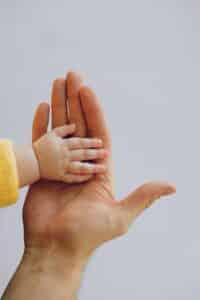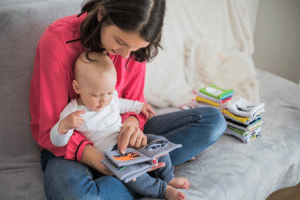The Power of Encouraging Children
Let’s face it: life is hard! Jobs, budgeting, grocery shopping, cooking, cleaning, meetings, doctor appointments. These and countless other pressures can at times feel overwhelming to adults.
While we tend to attribute challenges and difficulties to adulthood, this doesn’t mean children don’t experience their own struggles and challenges on a daily basis. Even in the most idyllic childhood, every child will experience fears, frustrations, and disappointments; these are inescapable.
What makes the sun peak through the clouds when life gets hard? While a raise, an indulgent dessert, or some peace and quiet might give temporary relief, one thing can make a world of difference to a discouraged soul:
Encouragement!
Why Encouragement Means So Much
We all have that friend or family member who listens and lifts us up when we’re down. They have an innate ability to speak encouragement to our soul and say just what we need to hear.
Children are people, too! They need to hear encouragement just like adults. Our challenges may look different, but we all have a need for encouragement.
Only affirmation, encouragement, or positive feedback motivates you to do things well–and to do even better than you were! The same goes for children. Children are deeply motivated to want affirmation from others, and encouraging desirable behavior, skills, and attitudes is the best way to have these habits stick around.
Encouragement is an excellent way to build perseverance in our children. When a task feels challenging or impossible to accomplish, encouragement helps it feel possible again. This leads to a greater chance for success, boosted self-esteem, and a sense of accomplishment.
Where Do Children Get Encouragement?
But who does a child look to for encouragement? While parents and teachers should help children develop the skill of encouragement, it’s rare to find mature encouragement in a peer age group. This means children look up to the adults in their life for life-giving words.
We can all agree that whether good or bad, what our parents say to us sticks with us for a lifetime. Parents should choose their words carefully and make them count. Encouraging words are incredibly powerful.
Parents should be the biggest cheerleaders in a child’s life! You can be the wind in your child’s emotional sails when you give genuine encouragement.
How Does Encouragement Help Children?
Think of the peace, pleasure, and motivation you have after an encouraging talk with a friend, therapist, or loved one, and how your challenges seem a little smaller. Your children experience these same emotions!
The National Association for the Education of Young Children lists the areas in which a child’s demeanor changes when they have encouragement. They:
- Are usually in a positive mood
- Listen and follow directions
- Have close relationships with caregivers and peers
- Care about friends and show interest in others
- Recognize, label, and manage their own emotions
- Understand others’ emotions and show empathy
- Express wishes and preferences clearly
- Gain access to ongoing play and group activities
- Are able to play, negotiate, and compromise with others
Encouragement is one of the biggest blessings we can give our children. Not only does it build a positive relationship with them, but they’re able to experience life with greater joy and more gumption.
Tips on Giving Encouragement
Ready to give your child more encouragement? Here are some tips:
Encourage, Don’t Flatter
There’s a huge difference between encouragement (Merriam-Webster: “to inspire with courage, spirit, or hope”) and flattery (Merriam-Webster: “to praise excessively”). Encouragement is beneficial, but flattery will simply give your child a big head.
Choose to inspire your child’s spirit with courage and hope instead of praising them excessively. A strong character and spirit will uphold a child when challenges come, but flattery gives a child little hope.
Make It Count
We’ve all heard the saying that too much of a good thing can be a bad thing. If you encourage everything your child does, encouragement can begin to lose its meaning. While you want to encourage your child often, you also want to make your encouragement count.
Take some time to reflect on some specific ways in which your child could benefit from encouragement. Perhaps they struggle with math, temper tantrums, picky eating, or countless other areas. Then pay particular attention to these areas and be quick to encourage, even at the slightest of improvements.
Encourage Character, Not Results
It’s easy to focus on separate actions or choices your child makes: share your toy, study hard, don’t be mean. But good choices and behavior often flow from quality character. Encouraging your child in their character development will yield lifelong benefits.
For instance, “You were so kind to see your friend was sad and share your toy” is better than “Good job sharing.” Or, “I’m so proud of your diligence studying this week” is better than “Good job getting an ‘A’.” The first statements encourage the child to develop quality character, which will benefit them their whole life, not just for sharing toys or getting good grades.
Make Personal Connections
Another way to encourage a child’s character is by revealing how their actions have affected you or someone else. For instance, extend your encouragement from “Thank you for picking up your toys” to “Thank you for picking up your toys; you’ve made our house feel tidy again,” or “You’ve helped me so much by picking up your toys.”
Helping children make connections between their actions and the effect of those actions will help them make better decisions in the future. They will be more likely to be cheerful, helpful, and considerate.
At Penguin Crossing Academy, we use the power of encouragement every day! We strive to help children grow to their fullest potential.
3 Reasons Summer is the Best Time to Enroll Kids in Daycare
If you’re considering putting your child in daycare, you may be wondering when is the best time to enroll. While Penguin Crossing Academy takes children as young as six weeks, most pediatricians consider six months to be the youngest beneficial age to enroll an infant in daycare.
Parents of early preschool children (around the age of three to five) who seek to enroll their child in an early educational program consider the beginning of the school year to be the best time for enrollment. However, there are compelling reasons to enroll during the summertime before the school year begins. Let’s examine each below!
Gradual Change
Change is hard for young children, especially if they have stayed home with a parent all their life. Starting school in the fall is an overwhelming change and they may not grasp academic concepts like they should because they’re trying to learn the schedule and new social rules. This can put them behind before they can even get started!
Enrolling a child in a daycare program over the summer will help them better prepare for an academic experience in the fall. Children can become accustomed to a daytime routine without their parent, so going to school won’t feel overwhelming. This will yield better academic results because the child will be comfortable and able to focus on their learning.
Penguin Crossing Academy offers enrollment on a full or part-time basis, which means that your child can attend Penguin Crossing Academy a few days a week. This is the perfect solution for a shy child! They can still have a few days with their parent but gradually ease into a full-time schedule by the fall. This boosts the child’s confidence, which allows them to focus on their education.
Even better, Penguin Crossing Academy has an early preschool program, so your child doesn’t have to learn any new routines, teachers, or friends in August. They can stay in their new comfort zone, which makes the schooling experience less stressful for your child–and you!
Summer Work Solution
Most jobs don’t take a summer vacation, which makes childcare challenging for many parents! Even if you wanted to stay home with your child every day, practically speaking, it’s impossible: you still need to work.
You might be able to juggle a childcare schedule between relatives, friends, educational camps, and VBS events, but it’s a Jenga puzzle that could collapse the moment the adult slated to watch your kid gets sick, has car trouble, or has to work a longer shift. What happens to your child and your job?
The far simpler solution is to enroll your child in Penguin Crossing Academy. We are open 7 AM-6 PM, which gives you tremendous flexibility to get all your work (and a few child-free errands) done so you can be fully present with your child when they are home.
Unlike the constant shuffling of babysitters, Penguin Crossing Academy is open rain or shine to care for your child. You can rest easy knowing that you have a reliable childcare solution.
Our teachers will be consistently familiar faces instead of a shuffling of babysitters. Many parents and children enjoy the relationships they build at Penguin Crossing Academy so much that they continue with after-school care once school begins!
Prepare For School
There’s a lot that goes into being academically successful.
For children entering their first year of formal schooling, there are many things adults forget that are challenging to children. Things such as standing in a line, keeping your hands to yourself, raising your hand to ask a question, being quiet while the teacher is talking, and so much more, are skills that are not naturally taught at home.
Children must have a classroom experience–sometimes learning through trial and error–to fully grasp these concepts.
Many first-day jitters are also due to new people and relationships. Children who have never made a friend without a parent’s help may feel intimidated and awkward around peers, and this can cause a lot of anxiety in children. Enrolling your child in daycare during the summer will help them learn essential friendship skills that will benefit them when school starts.
Children who don’t know these basic skills are at a disadvantage when they begin school. Most of their first few weeks may be predominantly learning new social and scheduling rules instead of academics.
Instead, children who are enrolled in an early preschool program have confidence walking into their first day of kindergarten. Their educational experience will be enriched because they know how to make friends, listen to their teacher, sit quietly, follow a routine, and much more.
These are just a few reasons why enrolling children in Penguin Crossing Academy during the summer is a wise childcare choice.
Tricks for Getting a Child to Nap Every Day
If there’s one thing every parent can relate to, it’s getting your child to nap. Even if you consider your child a great sleeper, at some point, they will struggle to nap. When a child misses their nap, it can make them overtired, which only perpetuates the sleeping problem.
So how can you make it easier for your child to nap every day? Keep reading for age-specific tips!
Why Do Children Need Naps?
Babies and young children are learning about their bodies and the world around them every moment of every day. Quite literally, every day they are learning something new!
Humans process new information and store memories during sleep. Because young children are constantly experiencing and learning new things, they need extra sleep to integrate and remember them.
The brains and bodies of young children literally grow during sleep! So if you want your kid to be strong and smart, adequate sleep is vital.
How Much Should My Child Sleep?
Babies, toddlers, and young children all benefit from naps throughout the day. How many naps or how long they nap for depends on their age.
- Newborns (0 to 3 months) need 14 to 17 hours of sleep per day. They take about four to six naps a day for about 30 minutes to two hours at a time.
- Babies (4 to 12 months) need 12 to 16 hours of sleep per day. Babies sleep for longer stretches at night. At 6 months, babies usually drop to two naps: one in the morning and one in the afternoon.
- Toddlers (1 to 2 years) need 11 to 14 hours of sleep per day. Before the 18-month-mark, toddlers still take two naps. However, around 18 months they transition to one longer, afternoon nap.
- Preschoolers: (3 to 5 years) need 10 to 13 hours hours of sleep per day. Some children stop napping between 3 and 4 years old, but others will still nap regularly until age 5.
- School-aged children (6 to 12 years) need 9 to 12 hours of sleep per day. By the age of 6, children no longer need to take a nap, getting all their sleep at night.
Tips for Helping Your Child Sleep
While every child is different, some general principles will help every child nap, no matter their age.
Avoid Overtiredness
While you might think that an exhausted child will sleep longer, this is simply not true. Exhausted, overtired children are in overdrive and will use this cranky energy to fight sleep. If your child isn’t getting the recommended hours of sleep (listed in the section above), then it’s likely that they’re fighting sleep because they’re overtired.
You can overcome overtiredness by setting firm boundaries on bedtime and nap time. It takes consistency, but setting a firm bedtime and nap time every day will help your child regain their lost sleep and settle into an ideal routine.
Time It Right
Children have natural wake and sleep windows, and taking advantage of when they’re naturally sleepy will make it much easier to get them to nap. Take note of when your child starts slowing down: choosing quieter toys, reading books, zoning out, or being easily irritable.
Babies and toddlers who take morning and afternoon naps will generally need a nap about two hours after waking up. Children this age should take a 1.5-2-hour nap in the morning and afternoon.
Toddlers and young children who only take an afternoon nap generally do best with their nap about a half hour to an hour after their midday meal. This is because the short-term energy from their food has worn off. Children this age can take a nap from 1-3 hours, depending on how many hours they sleep at night.
Be Consistent
It’s tempting to not require your child to nap every day, but there are a few problems with inconsistency.
First, your child will slowly build up a sleep deficit that will result in them being overtired. As seen above, overtiredness comes with its own set of challenges. Secondly, children thrive on consistency. If they never know when they need to take a nap, it’s easy for them to resist in various ways.
An added benefit of consistency is the parents and caregivers have predictable times throughout the day to rest or accomplish tasks.
Use Sleepytime Tech
There are plenty of excellent assistive tech devices that can help your child sleep. For instance, a simple noise machine that plays soothing sounds like the ocean, rain, or other white noise can help lull your child to sleep. Another smart device is to invest in a clock (like this one) that glows when nap time is over.
As children get older and transition away from sleeping every day, they may benefit from listening to a story in their bed. If they fall asleep, then they are tired enough, and if not, they at least get some rest.
Getting your child to nap can be a challenge! But the most important thing is to be consistent with a daily routine to avoid sleep deficits and tantrums.
Fun and Healthy Snack Recipes to Try at Home
Every parent can relate to the frustration of their child frequently asking for a snack. Sometimes, it seems like kids want snacks every few minutes!
While it’s easy enough to provide packaged snacks or easy fruits like apples and bananas, this can get expensive quickly!
Plus, the ingredients and additives in many packaged snacks can make your child’s food cravings worse.
Dyes like Red #40, Yellow #5, and Blue #1 are found in many packaged snacks, especially those marketed to children because their vibrance is attractive. But these dyes are detrimental to human health: they are carcinogenic and are linked to behavior problems, ADD/ADHD, and so much more.
Other ingredients like sugar (and their lesser-known names like high-fructose corn syrup, sucrose, fructose, etc.), seed oils, preservatives, artificial flavorings, and more, can have negative effects on childhood development, increase the risk of obesity, and more.
What Makes a Good Snack?
There’s a lot of health and diet advice out there! But basic science concepts can be applied to choosing a healthy snack.
We all know that sweet things–sugar and sweeteners, but also substances our bodies process as sugar like wheat and dairy–spike our blood sugar. We get that burst of energy and feel alert and in a good mood, but it’s only a matter of time before we feel sluggish and cranky again.
This blood sugar roller coaster happens when there isn’t a healthy fat to slow the absorption of sweeteners. Not all fat is bad, and when healthy fats are eaten in moderation, are actually very beneficial. They keep you full for longer, so you actually eat less–which is good for your budget and waistline!
Not to mention, children need healthy fats to grow strong minds and bodies!
A good snack for children will combine something yummy and fun with healthy fat or protein to slow the absorption and keep your child full for longer.
Here are some fun, yummy, and healthy snacks that your kids will love!
Chocolate Hummus
While beans in a sweet dip may some like a bad mashup, don’t pass this recipe over before giving it a try! 
This healthy dip can be served with a variety of sweet and salty dippers like fruit slices, pretzels, or crackers. The protein in the garbanzo beans or chickpeas slows down the sugar in the honey (or fruit dippers) so your child stays full for longer. Just blend these ingredients well:
- 1 can (15 oz) garbanzo beans or chickpeas
- 1/3 cup unsweetened vanilla almond milk
- 1/4 cup baking cocoa
- 1/4 cup honey
- 2 teaspoons vanilla extract
Yogurt Fruit Cups
Sweetened yogurt and fruit is a classic snack combination and irresistible for children and adults alike. The protein and healthy fat in the yogurt keep tummies full for longer than fruit alone. Plus, this snack is simple to prep and store a week’s worth of yogurt cups in your fridge for a super easy and delicious snack!
- 4 cups cut-up fresh fruit or berries
- 3/4 cup vanilla yogurt
- 1 cup granola (optional)
Evenly distribute the fruit amongst five single-serving cups. Spoon the yogurt evenly over the fruit. If using, portion granola into snack baggies to keep fresh until consumption. Keep refrigerated.
Peanut Butter Date Energy Balls
These energy balls are the perfect size for little hands that taste like a cookie without giving your child the sugar crash of a sugar-sweetened snack. 
- 1 cup dates, pitted
- 2/3 cup natural peanut butter
- 1/3 cup oats, quick-cooking or rolled
- 1 tsp vanilla extract
- 1 Tbsp chia seeds
- 1/4 cup mini chocolate chips, dairy-free if needed
Soak the dates in warm water for about 10 minutes. Drain the dates and blend them in a food processor. Once smooth, add the peanut butter, oats, vanilla, and chia seeds. Blend until the consistency is firm but pliable enough to roll into a ball. Add more oats if the batter is too sticky, or add more peanut butter if it is too dry.
Add the chocolate chips and mix with a spoon. Portion batter into 1 tbsp balls and store in a container in the refrigerator.
Frozen Yogurt Bark
If your kid is always wanting ice cream or popsicles, try swapping out this frozen yogurt bark instead. It gives your child the same enjoyment of a sweet frozen treat without the sugar and artificial flavors.
- 2 cups vanilla yogurt
- 1 cup blueberries
- 1 cup sliced strawberries
- 1 cup granola
Line the baking sheet with parchment paper. Spread the yogurt evenly on a baking sheet. Then sprinkle the berries and granola evenly onto the yogurt. Freeze for at least 3 hours, or until firm. Break into pieces and keep frozen until serving.
Growing children need to snack throughout the day to meet their dietary and energy needs. It’s your job as a parent to choose snacks that keep them healthy.
Developmental Toys Your Children Will Love
If you haven’t noticed by now, your child grows and matures at a rapid speed! While this is most noticeable in the infant and toddler years, children of all ages are making many neurological connections that will aid them for the rest of their lives.
Children learn primarily through play. Playtime is their “school” or “job” to develop the skills they need later for their actual schooling and occupations. When you see playtime as education, then you’ll want to provide your child with toys that grow their brains, bodies, and language skills.
Should All Toys Be Educational?
Not necessarily, but most of them should be.
Toys shape your child’s understanding and interpretation of their world. If every toy has lights, noises, music, or some technology component, they won’t be satisfied with anything that isn’t interactive in later years.
To give another word picture, toys are the “food” that nourishes your child’s brain, body, and language development. Children who grow up playing with open-ended toys (that is, toys that can be used in more than one way, like blocks) are more likely to be curious, have excellent problem-solving skills, and be more content, than children who play with highly-stimulating or tech-based toys.
If toys are like food, then open-ended toys are like the nutritious parts of a meal and tech toys are like dessert. They can be permissible, even more than once a day, but shouldn’t be your primary nutrition source.
How Your Child Develops
You must remember that your child develops in three primary areas: cognitive (which includes emotions), physical, and speech/language skills.
Cognitive development includes areas like problem-solving, decision-making, abstract thinking, and emotional regulation.
Physical development would be both gross and fine motor skills. Gross motor skills are big movements, like walking, running, jumping, climbing, etc. Fine motor skills involve picking up or manipulating small objects purposefully.
Speech and language skills include growing a vocabulary, developing sentence structure, and comprehending what others are saying.
A developmental toy will encourage growth in one or more of these areas.
Developmental Toys for Babies
The best developmental toys for babies are those with high-contrast colors. This is because their vision is still developing, so toys with bright or high-contrasting colors (like black and white) and bold patterns will grab and keep their attention. Playmats with mobiles are great for newborns, while blocks, stacking rings, and rattles are good choices for older babies.
Toys with various textures are another excellent option, as babies want to touch everything–and put it in their mouth! Many wonderful sensory books provide different textures and crinkly or squeaky sounds. However, ensure that toys and books don’t have any small pieces that a baby can choke on.
Once your child begins to be mobile, push and pull toys will help develop their gross motor skills. For speech and language development, simple books are the way to go. Baby books don’t even need a story; books that show pictures of everyday objects help them learn new words. Pointing to the objects and giving your own commentary is sufficient.
Developmental Toys for Toddlers
Children at this age crave toys that develop their cognition. Puzzles with large pieces, blocks, and matching games combine cognitive development with gross and fine motor development.
Toddlers also begin to love creating artwork. Simple art supplies are an excellent way to develop sequencing skills (first dip the paintbrush into the paint, then paint the picture), fine motor development, and creativity. Age-appropriate supplies include crayons, paint sticks, paint brushes, or markers. Just ensure that any art supplies are non-toxic, as children often try to taste them.
To develop your toddler’s speech skills, puppets, dolls and action figures, and kitchen sets let your child utilize their growing vocabulary. Age-appropriate books introduce new words, help build sentence structure, and reinforce their understanding of words they already know.
Developmental Toys for Young Children
Pre-K children have more developed cognitive, motor, and language skills and can do highly coordinated activities. They can do many of the same activities as toddlers but on a higher level. For instance, puzzles with interlocking pieces, magnetic tile pieces for building structures, and Duplo or LEGO blocks.
Children at this age benefit from tripod scooters, balance bikes or tricycles, or bicycles with training wheels to improve their gross motor skills. For fine motor, you can choose more challenging art projects, such as paint-by-numbers, scissor activities, stickers, or tracing.
Keep reading age-appropriate books to develop your child’s language skills. They may also benefit from an interactive toy that teaches letters, letter sounds, numbers, a second language, and more.
Choosing the right toys for your child is just as important as choosing the right foods. While everything is alright in moderation, you still want your child to eat their fruits, veggies, grains, and proteins. Don’t give your child just tech-based toys–instead, choose a variety of toys that develop their cognition, motor skills, and language skills.
How Important is Story Time in the Evening?
Parents and teachers intuitively know that children benefit from being read to, but how important actually is story time?
The science has proven that reading to children benefits them immediately and in the future! Children who are read to have:
- Better language skills – Quality literature improves language understanding, grammar, and sentence structure
- Increased vocabulary – Quality literature exposes children to a wide vocabulary and better understanding of words
- Improved literacy – Research shows a strong connection between reading aloud to children and advanced literacy skills.
- Emotional bonding with parents – positive connections are made between a parent and the child during read-aloud
Here are a few suggestions for finding time slots for reading to your child. Be sure to read to the end to learn the best time of day to read to your child!
Early Morning Reading
Every child is different. Some are bouncing off the walls as soon as they wake up, while others are sleepy and want to cuddle. If your child is an early-morning cuddler, then this is an excellent time to read with your child!

What a sweet rhythm to have with your child first thing in the morning. Cozy up with a blanket, some books, and something to drink or eat. This will quickly become one of your favorite parts of the day and cherished memories.
Even if your child is like an unleashed tiger in the early morning, you can still have early morning reading. It can even be an excellent way to teach your child self-regulation. Children want to engage with you, and while you might not be ready to wrestle at 6 A.M., they may be willing to snuggle up with a good book.
Mid-Morning Reading
By mid-morning, babies are ready for their first nap of the day and young children have burned through their energy from breakfast. For babies, taking just a few minutes to read to them before naptime is a signal to them that it’s time to sleep. You can even read to them while they drink their bottle!
Young children may have burned through their breakfast energy and are poking around for something to do or eat. Children need to engage with their parents frequently and often turn to their parents to help them regulate their emotions. This might take the form of mischief or whining, so it can be easy to turn to technology or snacks to get over the mid-morning hump.
However, remember that children want to engage with you, not technology. Taking a few minutes to read will give them the emotional regulation their bodies are craving, and you may be surprised that they aren’t as needy for technology or snacks as you previously thought. Often after reading, children are regulated and ready to choose their next activity with cheerfulness and independence.
Before Nap Time
Babies, toddlers, and young children should have regular naps. Often, children of these ages will take a nap in the early afternoon. This is another perfect time to sneak in some reading!
As your child starts to slow down, choose quieter activities, or zone out, initiate some reading time. Take the child to a cozy spot such as their bed or a rocking chair, and read one to three books. This further relaxes your child, gives them a visual timeline of when it’s time to nap (“This is our last book!”), and helps them fall asleep faster.
After Nap Time
Some kids struggle to wake up from a nap. They can be grouchy, sleepy, or whiney. But cuddling and reading a book while eating a snack is sure to chase away the nap-time blues! 
Similar to early morning reading, cuddling with your child and reading a book helps ease them into wakefulness again. A healthy snack or drink also helps gently raise blood sugar and mood so they are cheerful after reading together.
Before Bed
Science is now showing that reading before bed is the best time to read with your child. In one study, reading at bedtime significantly improved total nighttime sleep duration. If there’s one thing parents want, it’s for their kids to sleep deeper and longer!

With sleepiness to keep them relaxed and fighting sleepiness to keep them alert and engaged, reading at bedtime gives you the best bang for your buck. Reading with your child before bed helps establish a stable routine, promotes bonding, and gets them into a sleepy state of mind to fall asleep–and stay asleep!
